Baby’s First Year: Week 1
- September 17, 2020
- by Melissa Lawrence
- Growth and Development
- Newborn Umbilical Cord Care
- Postpartum Symptoms and Treatment
- Constipation after Childbirth
- Postnatal Supplements and Vitamins
- Painful Vagina after Giving Birth
- Postpartum Puffy Eyes
- Mood Swings after Giving Birth
- Newborn Breastfeeding Tips
- When will my Milk come in after Giving Birth
Hello everyone and welcome to my new series on Baby’s First Year. In this series, I’ve compiled everything I have learned over the course of nurturing five (now six!) babies. You’ll find practical tips on baby care, breastfeeding, newborn, baby and toddler feeding and sleep schedules, mom care, and more. I’m going through all of this right alongside you as my own baby (#6) is currently 1 week old! Let’s get going!
1-Week-Old Baby: Growth and Development
What a difference a day makes, right? Last week, you were anxiously awaiting giving birth and now, this week, you are recovering with your little one (hopefully) by your side. Your baby right now is incredibly tired — just like you — as they are still recovering from birth. Your baby will be sleeping during the majority of the day. However, their sleep will be broken up into small blocks, as they will wake up frequently, hungry for milk. Despite this hunger, your baby will actually lose between 5% and 10% of their birth weight during their few week. Don’t panic! Doctors advise that this is entirely normal, and that most babies quickly make up for this loss in weight.
What is the Average Size and Birth Weight of a Newborn Baby?
The average baby weighs around 7.5 pounds and is approximately 20 inches in length. This varies, so if you have any concerns, follow your pediatrician’s guidelines.
What is the Full Vision of a Newborn Baby?
In your baby’s first week of life, their vision is blurry and they can only see about 8 inches in front of their face — just enough to identify your breast (or a nipple from a bottle) to suck from. So make funny faces up close!
What should a Newborn Baby Look Like?
If your baby still is covered in lanugo, this will begin to fall out around now. Your baby’s head might look a bit uneven or bumpy; this relates to the softened skull that allows babies to fit through the birth canal. Your baby’s scrotum or labia is likely very swollen at the moment. Don’t freak out (I certainly did), as this is merely a side effect of the hormones that are still coursing through your baby’s body. This symptom will soon fade. Your baby’s skin might appear splotchy, red, or rashy. Ask your pediatrician to recommend a safe moisturizer.
Newborn Umbilical Cord Care
Your baby’s umbilical cord will still be there and will fall out gradually over time. Do not touch it nor treat it. Wrap the diaper on under the umbilical cord by folding it over. By the way, I saved all of my kids’ umbilical cords, which my kids now find to be kind of gross.
Postpartum Symptoms and Treatment
Constipation after Childbirth
For Mom, it might feel scary or painful to go to the bathroom in the days and weeks following birth, especially if you have had vaginal tearing. I had a vaginal tear with my first baby Hedley and had a lot of pain and discomfort associated with that. Regarding going to the bathroom, I had a lot of trouble after each baby and asked the doctor for a breastfeeding-safe laxative, which I took a few times. Right now I am taking a laxative every other day. I plan to stop this after one week and just take aloe pills if I am still having trouble going to the bathroom. To battle constipation, remember to hydrate, eat lots of fibrous foods, and walk around.
Postnatal Supplements and Vitamins
Get a healthy postpartum supplement from your OB and one that is specific to nursing or lactation if you are breastfeeding. Your OB likely will also give you iron supplements so that you do not become anemic and a medicine to make sure your tummy tolerates all of these vitamins. I stopped taking the iron supplements because they were preventing me from going to the bathroom, and my doctor told me to focus on eating iron-rich foods instead.
Painful Vagina after Giving Birth
You likely will experience a painful vagina from birth if you have had a vaginal birth. You likely also will have lots of bloody discharge. Find some absorbent maxi pads (I found post-partum ones) and layer them. Some people swear by witchhazel and apply that to the pads. If your delivery tore your vagina, your doctor might have given you a healing spray, so apply that after gentle cleaning. Put a towel over your sheets for sleeping at night to catch any blood.
Postpartum Puffy Eyes and Blood Vessels
Your eyes might be puffy, red or bloodshot postpartum, which is a side effect of pushing. With my first baby, I had pushed so hard that I blew blood vessels in my entire face. They went away within a week.
Mood Swings after Giving Birth
Signs and Symptoms of Postpartum Depression

New Chapter, Postnatal Vitamins Lactation Supplement, Complete Multivitamin with Fermented Vitamin D3 + B Vitamins, Made with Organic Vegetables & Herbs, Non-GMO Ingredients, 96 Count


ACTIF Postnatal Vitamin with 25+ Organic Vitamins and Organic Herbs, Nursing and Lactation Supplement, Supports Baby's Brain Development, Non-GMO, Made in USA, 90 Count


Best Nest Wellness Mama Bird Postnatal Vitamins for Women Breastfeeding & Postpartum, Methylfolate, w/Organic Whole Food Blend, Methylated Vitamins, Choline, B12, Once Daily Vegan Multivitamin, 30 Ct


Prenatal Vitamins for Women by MaryRuth's | USDA Organic Prenatal Gummies | Postnatal Vitamins for Women Breastfeeding | Methylfolate 800 mcg DFE | Iodine | Vegan | Non GMO | 30 Servings


MaryRuth Organics Prenatal & Postnatal Liposomal Multivitamin Women, Sugar Free Liquid Vitamin, for Pre-Conception, Pregnancy, Nursing, Vegan, Non-GMO, Gluten Free, 1 Month Supply, 15.22 Fl Oz


MegaFood Baby & Me 2 Postnatal Vitamins for Breastfeeding Moms with Folate (Folic Acid Natural Form), Choline, Iodine, Vitamin D, Moringa Leaf and More - 120 Tabs (60 Servings)


NATURELO Postnatal Multivitamin - Supplement for Breastfeeding Women - Plant-Based Vitamin D, Folate, Gentle Iron - for Nursing Mother, Baby - Post Natal Lactation Support (180 Count (Pack of 1))


Pink Stork Total Postnatal Vitamin Gummies for Women, Postpartum Recovery and Lactation Support with Folic Acid, Vitamin B6, and Vitamin C, Postpartum Essentials - 60 Gummy Vitamins


Postnatal Vitamins for Breastfeeding Moms - Lactation Supplement with Organic Herbs, Minerals, Nutrients for New Mothers and Baby - Postpartum Pills for Energy and Mood, Non GMO, Vegan, 60 Capsules


Pink Stork Total Postnatal Vitamins for Women with Vegan DHA, Iron, Folate, and Vitamin B12, Postpartum Recovery Essentials, Daily Supplement for Breastfeeding Moms - 1 Month Supply
Newborn Breastfeeding Tips
When will my Milk Come in after Giving Birth?
If you are breastfeeding, your milk likely will come in between days 2 and 5. With Bracey, who is a premature baby born at 30 weeks gestation, my milk began coming in on day 4 and continued increasing in supply through day 7. When your milk comes in, your breasts can feel hard and sore and become engorged. To battle this, breastfeed and pump on a schedule and take cold showers (this is the latest recommendation, hot showers being the former recommendation), allowing the water to soothe your breasts. Avoid applying anything to your nipples and breasts other than colostrum and breastmilk after feedings, which you can allow to air dry.
Why do I need a Proper Breastfeeding Latch?
A proper latch is the key to successful breastfeeding and will prevent blisters and fissures. If the latch is correct, you will have tolerable pain and will be able to successfully breastfeed. Breastfeeding always hurts in the early days and weeks, especially when your baby first latches on. Try holding your baby in a horizontal position. Tease them to open their mouth by rubbing your nipple back and forth along their mouth. When your baby opens their mouth, align their lower lip with the lower part of your areola and gently fold their head towards you. The NICU nurse also advised me to dip the baby’s head back a bit to encourage them to open their mouth wide. Ideally, your baby’s mouth will be around the entire areola. If your baby’s mouth is too narrow (I call this a fish mouth) break the suction by dipping your pinky finger into a glass of sterile water and inserting the finger between your breast and your baby’s mouth. Then, try to have your baby latch on again. A good latch also stimulates your breasts to produce more milk. Again, to fight blisters and fissures, gently apply colostrum or breastmilk on your nipples and breasts and allow them to air dry after nursing sessions. It’s nature’s remedy and has worked better for me than any nipple cream.
What Does the First Breastmilk Look Like?
You will produce very little breastmilk the first few days. Rather, you will produce colostrum. You might be asking yourself “what is colostrum?” Colostrum is the yellow, milky-like substance that first comes out of the breast. When my 3rd baby Beckett was born prematurely and went to the NICU for 10 days, I pumped and pumped and for the entire first two days, only droplets emerged. This struck me by surprise since with my other babies, I thought they were sucking down sizeable quantities of milk and appeared full but they were not! This is when I realised that the body produces only small quantities of colostrum in the days after birth. My milk came in with Beckett on day 3 and with Bracey on day 4. When it comes to breastfeeding, many women immediately abandon ship because they do not think they have enough milk. In my experience, this is not the case.
Newborn Breastfeeding and Pumping Schedule
During the first few days and weeks, keep that baby on the breast sucking and sucking and sucking. No less frequently than every three hours from the beginning of each feed, sit down with a tall glass of water and breastfeed your baby. Make sure you have a comfortable, supportive chair — ideally, a nursing chair or glider. Give the baby and your breasts a break between feedings. Try to end a feeding when you see that the baby is awake and full. Although Week 1 is topsy turvy and the baby might want to eat more frequently, this schedule hopefully will help you keep track of feedings, making sure that you feed the baby at least every three hours from the beginning of a feed:
- 7am — sleep 8:30-10am.*
- 10am — sleep 11:30am-1pm.
- 1pm — sleep 2:30-4pm.
- 4pm — sleep 5:30-7pm.
- 7pm — sleep 8:30-10pm.*
- 10pm — sleep 11:30pm-1am.*
- 1am — sleep 2:30-4am * (push this back an hour if your baby is doing great and regaining birth weight so that you can get the extra rest).
- 4am — sleep 5:30-7am* (push this back an hour if your baby is doing great and regaining birth weight so that you can get the extra rest).
* Mom tries to sleep too!
In essence, the newborn sleep schedule will fall into place around the newborn breastfeeding schedule. Note that these are very general guidelines for sleep since the reality is that the baby will remain asleep for much of the day. Check with your doctor about nighttime feeding times as they might recommend a three-hour schedule during the nighttime hours, but I have followed this with several babies and it worked great.
Breastfeeding and New Mother’s Sleep
Sleep whenever you can and most especially try to grab a nap when the baby goes down to sleep after the morning feed. This can make up for the sleep you did not get overnight. When your breastfeeding session is finished at 8:30pm, try to hand the baby off for diaper changing and swaddling and go to sleep yourself. And try to sleep like this (1.5 hours at a time or more if you are feeding every four hours during the night) during the evening hours and night. An additional nap after the morning feed from 8:30-10 until the baby wakes up can make a world of difference. You need to sleep, your milk needs for you to sleep, and your baby needs for you to sleep. So do it.
How to Keep Baby on Breast
When you fear you do not have enough milk and give the baby a bottle, the baby is not sucking on your breasts and you therefore produce less milk. It’s a slippery slope so resist the temptation and do not get scared. If you are interested in breastfeeding, do not supplement until your pediatrician or the nurse says you need to. Your baby might be getting exactly what they need but you do not realize it because you think he needs more milk. By all means, if your baby is not getting enough milk, supplement with pumped breastmilk or formula after feedings. I have done this with two babies and each of them had a successful breastfeeding experience in the end.
How to Keep a Breastfeeding Baby Awake During Feedings
Feed until your baby appears awake and full. Feedings will take a long time at this stage (for me, they often took 1.5 hours) so breastfeeding is occupying half of all your time. Try to rid yourself of anything you do not need to do and just concentrate on the breastfeeding. To keep your baby awake to eat, play with their fingers and toes, change their outfit or change their diaper. If your baby nods off to sleep after breastfeeding for just a few minutes, and the nursing session ends, you will be back nursing again in less than an hour and you will end up breastfeeding all day long. This type of “on demand” feeding is recommended by many, especially during the first week, but I never followed it. Rather, I never let a baby sleep during the day past three hours after the prior feeding time until that baby was sleeping through the night for 12 hours. When I did allow my babies to sleep beyond what I have outlined here, my babies were awake more at night.
Newborn Pumping and Milk Storage
After you finish breastfeeding, try to pump for just 5-10 minutes. Consider renting a Medela Symphony Pump with two sets of equipment. This is controversial advice because some would argue that you are over lactating but it is the best piece of advice anyone ever gave me. It evens out the stimulation you are providing to each breast and allows you to store up breast milk. Store the breastmilk from each pumping session immediately in the fridge. Here are guidelines for storing milk. You can combine the milk from one feeding session with another until the end of the day at which point, you freeze the milk, but try not to mix warm and chilled milk. Rather, store the new milk in a separate bottle until freezing.


Lansinoh Milk Storage Bags, 200 Count Value Pack, Easy to Use Breast Milk Storage Bags for Feeding, Presterilized, Hygienically Doubled-Sealed for Refrigeration and Freezing, 6 Ounce


Lansinoh Breastmilk Storage Bags, 50 Count, Easy to Use Breast Milk Storage Bags for Feeding, Presterilized, Hygienically Doubled-Sealed for Refrigeration and Freezing, 6 Ounce


Nuliie 120 Pcs Breastmilk Storage Bags, 8 OZ Breast Milk Storing Bags, BPA Free, Milk Storage Bags with Pour Spout for Breastfeeding, Self-Standing Bag, Space Saving Flat Profile


Medela Breastmilk Storage Bags, 200 Count, Ready to Use Breast Milk Storing Bags for Breastfeeding, Self Standing Bag, Space Saving Flat Profile, Hygienically Pre-Sealed, 6 Ounce


Momcozy Breastmilk Storage Bags, 200PCS Value Pack, Temp-Sensing Discoloration Milk Storing Bags for Breastfeeding, Presterilized, Hygienically Doubled-Sealing, for Freezing, 6 Ounce


Medela Breast Milk Storage Cooler Bag with Contoured Ice Pack, 4 Bottles and Lids, Convenient Breastmilk Transport


Dr. Brown’s Breast Milk Storage Bags, Disposable and Durable Bags for Freezing & Heating Breast Milk, (50ct) 6 oz Bags, BPA free


Zomee Disposable 8 oz Breast Milk Storage Bags w/Double Zipper Seal – Count – Leak-Proof – Self-Standing Breast Milk Storage Solution for Fridge or Freezer - Mutiple Count Packs (Pack of 90)


Sposie Breastmilk Storage Bag Freezer Bags with Pour Spout - 8 Ounce Capacity, BPA Free, Leak Proof, Temperature Sensor, Compatible with Most Breast Pumps for Breastmilk Freezer Storage, 100 ct.


Jelly Ruru 7 PCS Reusable Breast Milk Storage Bags, 8.5oz 250ml LFGB Standard Silicone Breastmilk Freezer Storage Container, Leak Proof & SelfStandingMilk Bags, Baby Food Bags, Transparent
Newborn Bottle Feeding Tips
Formula Feeding Schedule For a 1-Week-Old Baby
If you are formula feeding, consult with the pediatrician regarding amounts per feed. During the first week, your baby will have 1 to 3 ounces of formula every three to four hours (this will be closer to 2 to 3 ounces a feeding after the first few days). The general rule is to wake your baby after five hours but I would not go this long. Letting your baby sleep five hours after the feeding will mean going six hours between feeds and this, in my view, is way too long and will lead to more awakenings at night. You want your baby starting as early as day 1 to eat and be awake during the day and to sleep and not eat at night. I recommend feeding no less frequently than every four hours from the beginning of a feed. So your schedule might look something like this:
- 7am — 9-11am nap
- 11am — 1-3pm nap
- 3pm – 5-7pm nap
- 7pm – 8pm bedtime
- 11pm – right back to sleep
- 3am – right back to sleep
Make sure to disinfect bottles and nipples. Take advantage of the bottle and seek to share the work a bit with your partner or a family member! Grab the rest when you can get it.
Baby Care for a 1-Week-Old Baby
Newborn Baby Diapers and First Poop
The first diapers will have a sticky dark green/ black substance called meconium. These are baby’s first poops and a result of the colostrum that is the first thing the mother produces. This meconium will last for approximately three days at which point your baby’s poop will change to a mustard-yellow grainy poop. Expect 6-10 dirty diapers a day, perhaps less if you are formula feeding. To facilitate diaper changes, invest in disposable baby changing pad liners. They prevent having to change the changing pad cover repeatedly.
Caught exception: Failed to open streamNewborn Baby Sponge Bath
You may or may not feel comfortable doing baby’s first bath this week. It will be a sponge type bath where you lay baby on a towel while supporting him and wash him gently, rinsing with handfuls of warm water. Buy a gentle, organic liquid soap for this purpose and I would not sweat over moisturizer. Have someone else by your side and one of you can hold the baby while the other washes and rinses him on the towel.
Should I Swaddle a Newborn Baby?
Swaddling has been a lifesaver for me and I did it tightly for each baby with the arms in. Invest in the hospital burp cloth which makes swaddling a breeze and double-serves as the best burp cloth. Swaddling mimics the position babies experience in the womb, which is tight and comfortable. I found that my babies slept much better when swaddled. The NICU is not swaddling Bracey because they want to encourage him to freely use his limbs, given how premature he is, so I doubt that I will swaddle him when we bring him home. But I swaddled each of my other 5 babies and it worked great.
1-Week-Old Baby: Premature Baby Care in NICU
Two of my babies have been in the NICU. Beckett, my third child who had premature lungs when he was born at 36 weeks, and Bracey, my sixth child.
Bracey’s Birth Story
I have a history of preterm labor and all of my prior five children were born early at between 35 and a half weeks (the girls) to 36 (Beckett and Lachlan, my second and third children) to Hedley (my first child) who was born at 37 and a half weeks. Only Beckett stayed in the NICU for a while. He had premature lungs and needed surgery at one day old to repair a hole he blew in his lung. It was scary but he recovered quickly and we took him home on day 10.
Bracey’s First Day
My pregnancy with Bracey proved pretty straightforward and up until the week before he came, things looked good. Earlier in the pregnancy at around Week 24, the doctors had placed a pessary in my uterus to keep it long. The baby was measuring long and big and everything looked good when I had a 29-week sonogram. The Tuesday before Bracey was born at 29 weeks and 4 days, I saw some blood in my pantiliner. We went straight to the hospital. I started having minor contractions that were frequent, nearly every three every 10 minutes. They administered a medication via an IV but the contractions did not stop. The doctor’s then put me on another, stronger medication for which the IV drip would last two days and I stayed on this until 29 weeks 6 days, the night before Bracey was born. That evening, despite the medication, the doctors took a look at me and saw that I was already 4 centimeters dilated. They told me there was nothing more they could do to stop the labor. The contractions really hurt. I have had natural childbirth two times but it’s nothing I am attached to and I asked for the epidural. They administered that and my entire lower body felt numb. I fell asleep for about two hours until around 8 in the morning. When I awoke, the doctor’s examined me and told me I was 10 centimeters dilated. They took me to delivery, broke my water, and I pushed three times. I could barely feel the pushes. Bracey was born!
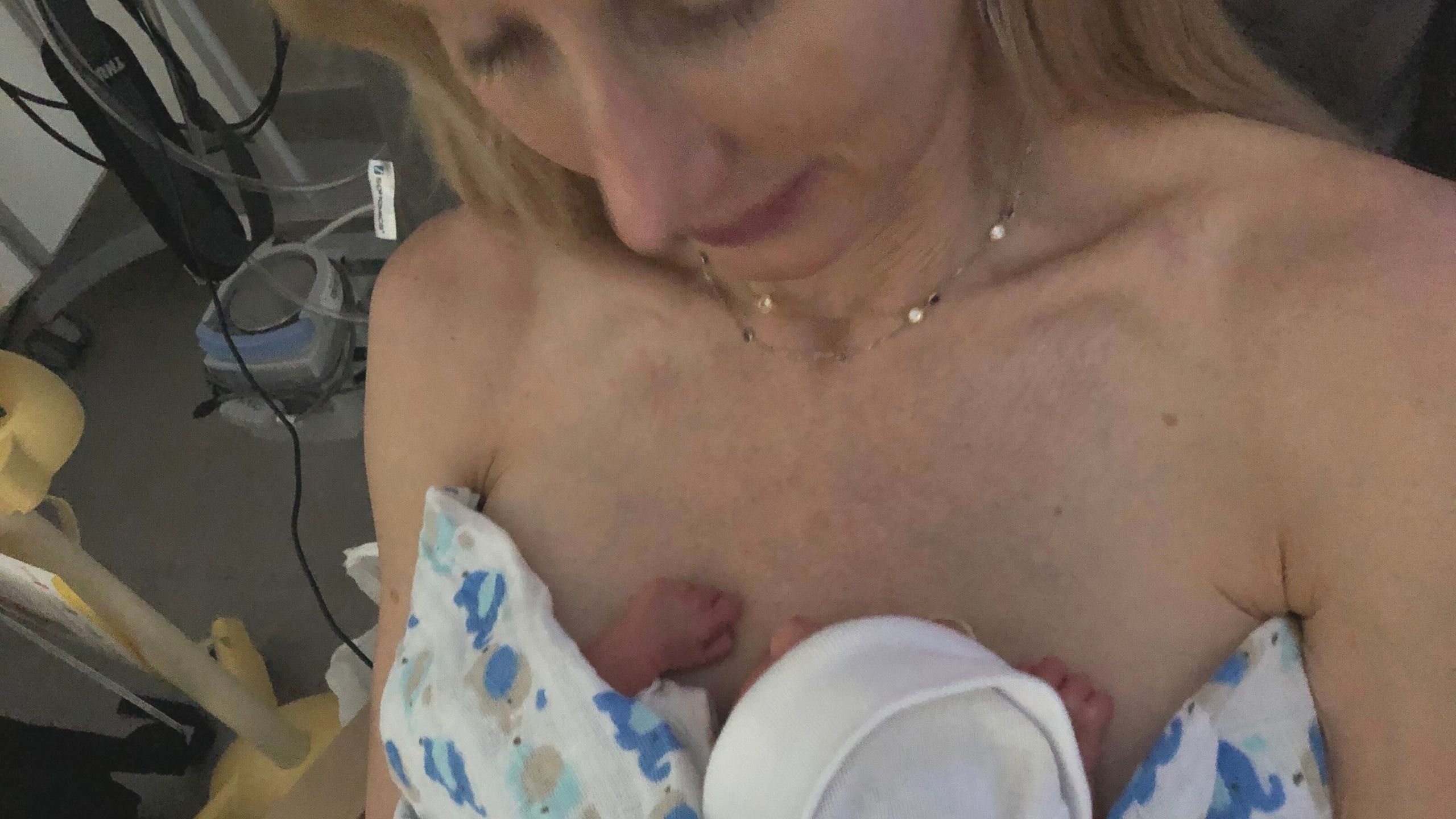

Feeding Catheters for Premie NICU Babies
Much to our surprise given how premature he was, they put Bracey immediately on my chest and he stayed there for nearly 30 minutes. Then they took him to the NICU. Our beautiful baby had been born and our NICU experience had begun. At about 12pm, I went to the NICU to see our little wonder. He had a catheter in his nose for feedings. Later that day, the nurses inserted another catheter through his elbow that went to his heart, which would carry water, vitamins, and minerals.
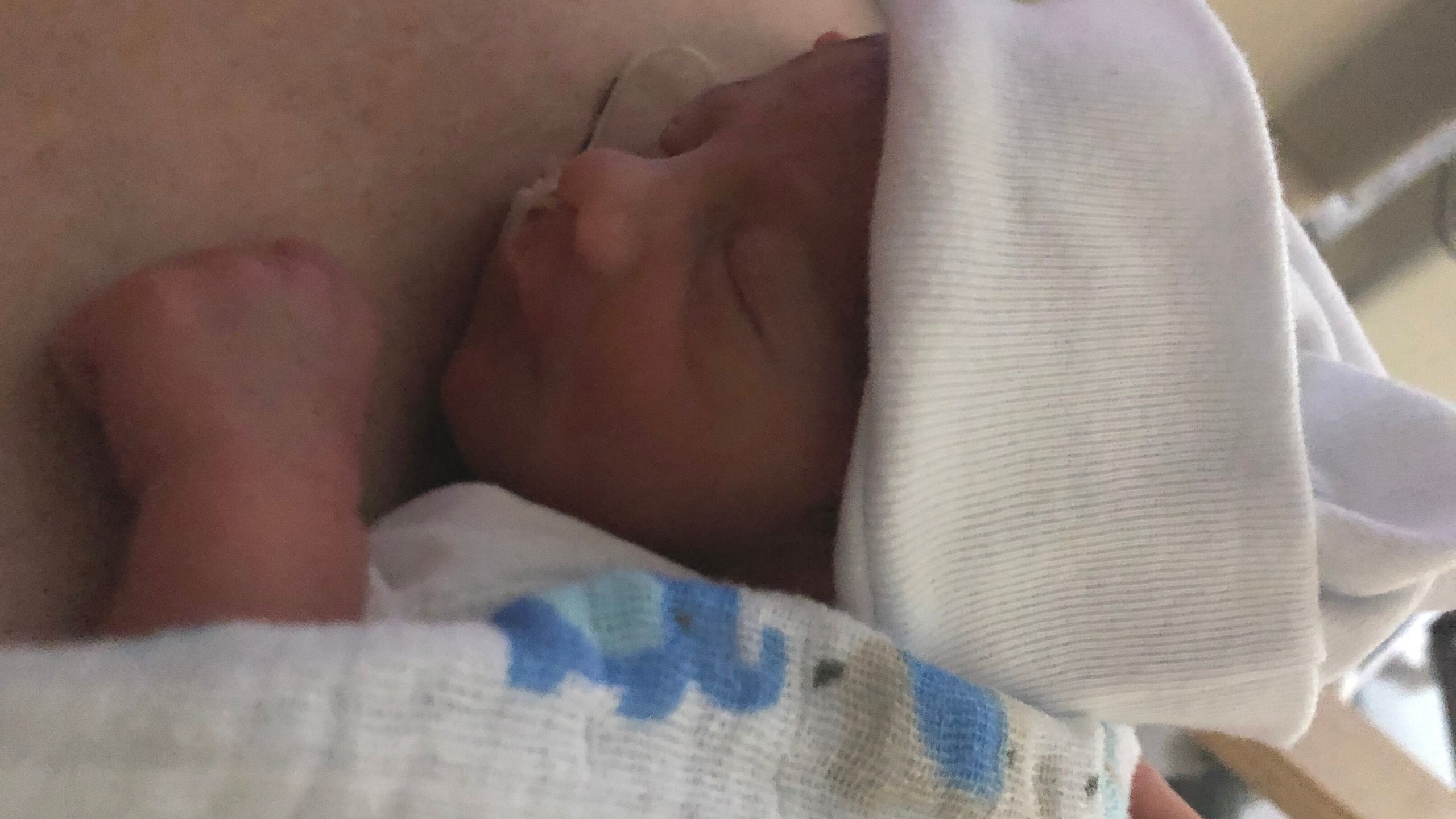

Milk Bank Milk for Newborn and Premature Babies
Bracey has been getting a combination of milk bank milk and my milk. It took quite a while for my milk to come in. The first few days I had very small amounts of colostrum. On Day 5-6 my milk began to come in and I pumped more visible amounts. I will be eternally grateful to the mothers who provided the milk to the milk bank. Thank you from the bottom of my heart.
Breast Pumping Tips for Newborn and Premature Baby
Although the nurses advised pumping for 15 minutes every three hours, this did not work for me. I began pumping for much longer sessions, I would say an hour, every 3-4 hours, just basically trying to live with the pump on, the way you live with a newborn on your chest. Yet I did it on a low setting. This worked! Renting the Medela Symphony Pump from the pharmacy across the street also helped ease my anxieties and I have used it for the late evening, nightime and morning pumping sessions when I am not at the NICU. I am waking up once a night and pumping for an hour, sleeping three hours before and then three hours afterwards before I get up in the morning and pump for another hour before the kids wake up while I have coffee and breakfast. This pumping schedule requires a lot of organization but it’s keeping me occupied, for sure.
Bracey Update
By day 6, Bracey was up to eating 25ml per feeding and expecting to have his food intake increased again on Day 7 of his life.
Our little guy is a fighter. They took the catheter to the heart out on day 5 and on day 7 he ripped out the nose catheter twice. On day 6 of his life, Bracey was moved out of the intensive care section of the NICU and was up to taking 29 ml of milk per feeding.
Thanks so much for reading and watching and see you all back next week for Week 2 of Baby’s First Year.



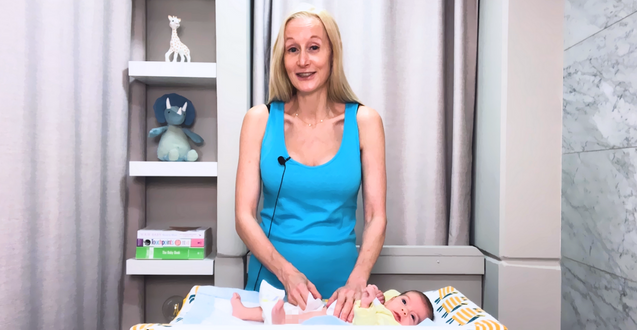
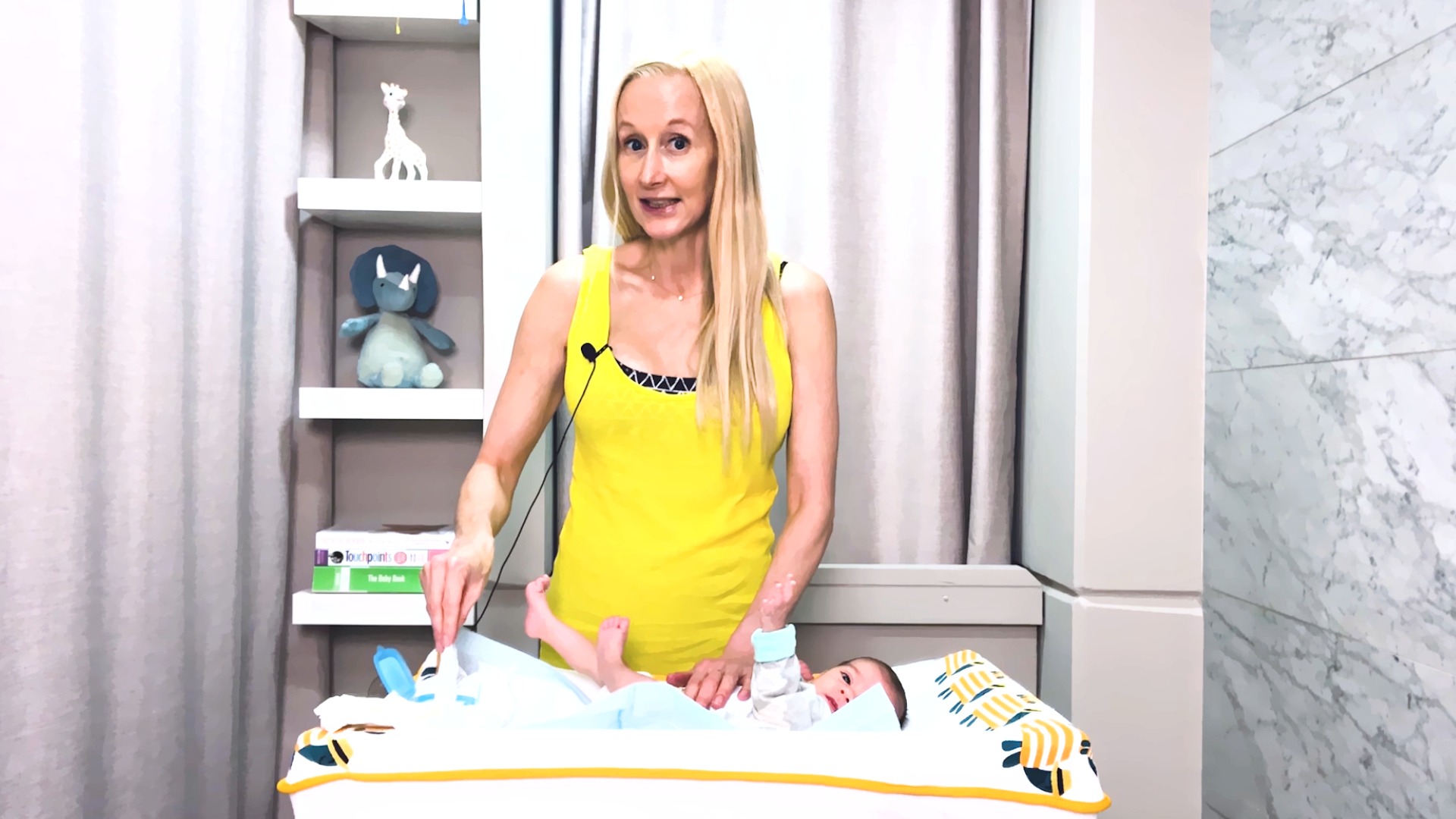
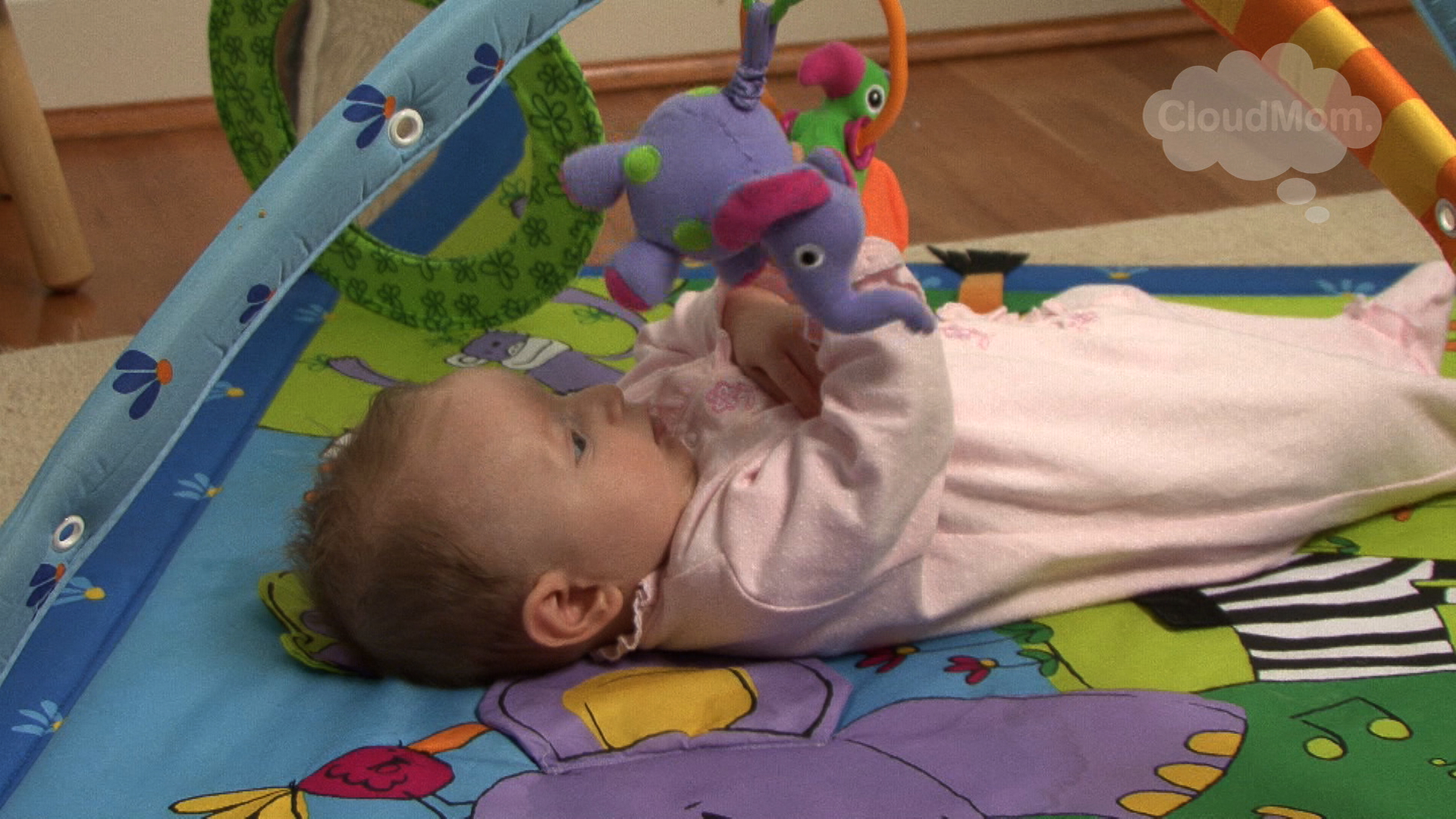



Comments